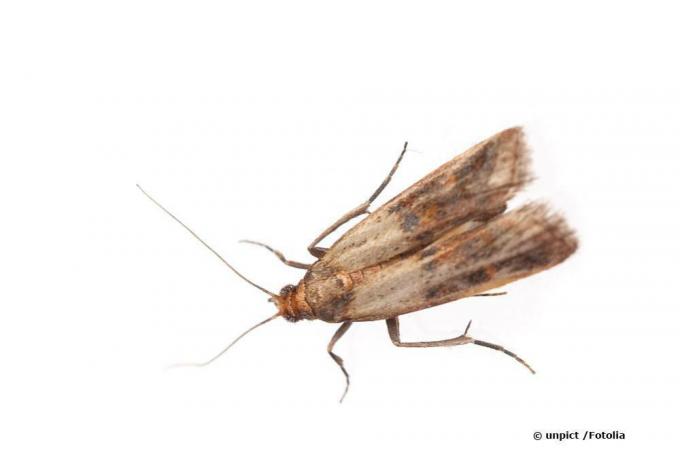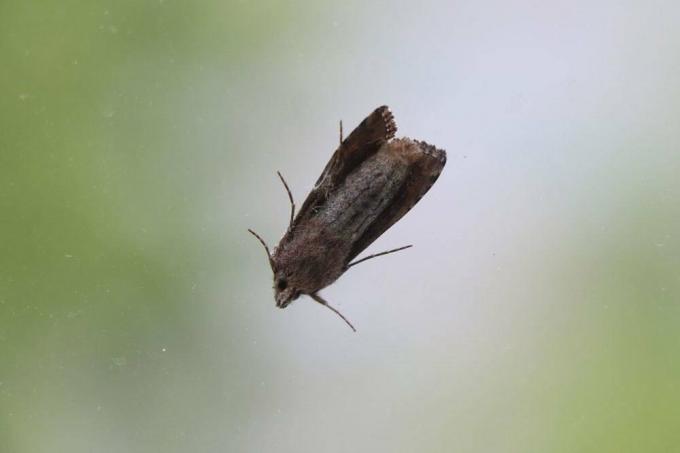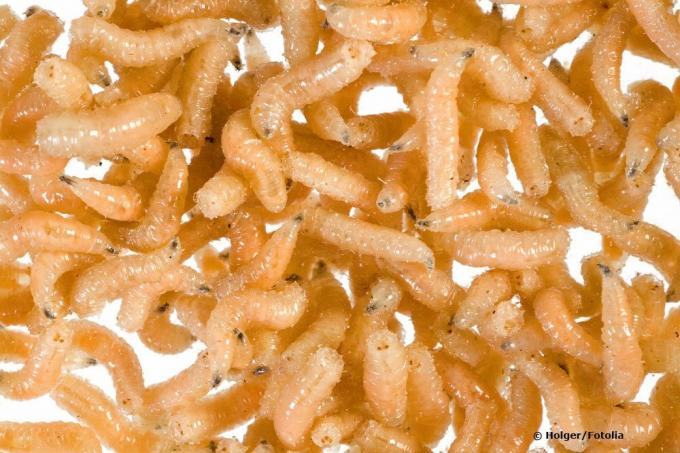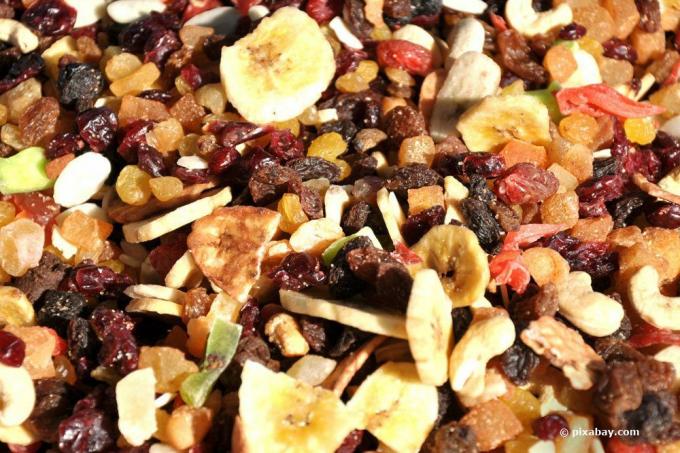
table of contents
- Maggots and their companions
- Where are you from?
- Getting rid of maggots & moths
- Check food supplies
- Destroy infected food
- Thorough cleaning
- Maggots and moths on the move
- Offspring in the starting blocks
- Prevent maggots and moths
White maggots crawling on the ceiling raise alarm bells in all of us. It is not normal for these animals to spread in our habitats! Are they a sign of uncleanliness? No. Nevertheless, energetic gripping is now the order of the day.
White maggots and disgust go hand in hand. Nobody wants to come into contact with the little creeps. If a maggot is then seen in your own four walls, the horror is great. She has to go immediately! It's good if it stays with one maggot. But more of them usually follow. Where are you from? And most importantly, how do you get rid of them?
Maggots and their companions
White maggots, or more precisely caterpillars on the ceiling, are mostly descendants of moths. But even these are occasionally observed on the ceiling, the walls or fluttering in the rooms. Laying eggs and pupated larvae are also part of this infestation, but are usually so well hidden that they are not immediately visible. Undetected and left to develop freely, the moth population then increases rapidly.
- Food moths feel at home in the kitchen
- also called kitchen moths
- among them are: flour moth, corn moth and dried fruit moth

Note: If moths are spotted in other rooms as well, it should be checked whether the clothes moth is still at work here.
Where are you from?
First of all, moths are not the result of poor hygiene. Because they are usually brought in with the purchase of food. In the depths of the kitchen cupboards, they then multiply in secret for a long time until they are discovered by chance or their traces can no longer be overlooked.
- Moths flutter in kitchen cabinets or in the room
- Larvae pupate in hidden cracks
- white caterpillars can be spotted all over the closets
- often they crawl on the ceiling
Possible sources for moth larvae
Food moths feed on our food and can therefore be found right in the middle. They prefer dry foods that do not need refrigeration. Among them are above all:
- Flour, rice and starchy products
- whole and ground nuts
- legumes
- spices
- Pasta, cookies, muesli
- chocolate
Getting rid of maggots & moths
Check food supplies
White maggots that can be seen on the ceiling of the kitchen are usually just the tip of the iceberg. The far larger part of the “moth family” lurks somewhere in the middle of our food. Far too often we tend to be one stock of it to invest. At the very back of our cupboards, they are stored for months until they are “maybe” needed at some point. In the meantime, they feed the maggots.
- Thoroughly examine all, really all, food
- dry stocks are primarily affected
- webs can often be discovered in it
- depending on the progress of the infestation also white maggots and butterflies
- Clear out cupboards and look in every corner
- also destroy discovered moths
- there can be several foci of infestation
- therefore do not stop the search after the first find

tip: Moths and their offspring also block their way through thin plastic packaging or cardboard boxes. It is therefore imperative that you also check unopened food.
Destroy infected food
All food that has been compromised must be disposed of immediately. They are not suitable for consumption and also house an egg brood, which provides further moth replenishment.
- Do not use contaminated food anymore
- Dispose of immediately and completely
- put in the garbage can outside
- better to throw away a little too much than too little
tip: It is also recommended to freeze infested food residues for about 24 hours to destroy the pests. Only then is the food thrown away. Since the garbage often waits for days to be picked up, there is otherwise the risk that the flying moths will get back into the rooms.
Thorough cleaning
After the moth habitat has been discovered and removed, it's time to thoroughly clean the kitchen. For this is a Vinegar cleaner well suited. If possible, no crack or drill hole should be left out. Another way to destroy the eggs is heat. Inaccessible areas can then be heated for a few minutes Foehn air to be edited.
Maggots and moths on the move
White maggots don't stay in their food source forever. Many leave their land of milk and honey and then set off on a hike. Especially the ceiling is a popular destination. But butterflies also find their way out of the kitchen cupboard and flutter around or are spotted on the walls.
- Examine every corner of the kitchen
- Walls, ceilings and cabinets
- Collect finds with a cloth and destroy
- moths appear in the twilight
- Also carefully collect and destroy butterflies
- possibly. Put sticky moth traps up
Note: If a moth is hit by a fly swatter, it is definitely destroyed. On the other hand, this type of removal leaves ugly marks on the ceiling or Wall. Vacuuming and disposing of the vacuum cleaner's contents immediately would be a possible alternative.
Offspring in the starting blocks
When you have discovered and eliminated all migrating maggots and moths, that is far from being the end of it. Because the next generation is already waiting in the starting blocks. Now it's time to cook the eggs or look for pupated larvae. And that's a lot of work, because there is no shortage of possible whereabouts.
- Moth eggs are very small
- therefore difficult to see
- are usually placed near possible sources of food
- Moth larvae retreat to pupate
- prefer remote places
- in the cracks of the kitchen cupboards
- also look into the cracks of the Tupperware jars
- in drill holes, sockets, end strips, etc.,
- behind furniture

tip: In a kitchen there are innumerable hiding places for the pupated larvae. Even with the most thorough examination, some of the hiding spots can go undetected. It is therefore important to keep an eye out for the moth family in the following weeks and if necessary to respond immediately.
Parasitic wasps hunt moth eggs
A chemical agent is not suitable for use in the kitchen as traces of it can get into our food. In the case of very severe moth infestations, however, we have an effective biological control measure at our disposal: the parasitic wasp. Ichneumon wasps cannot be compared with the wasps known to us.
- special breeding for moth control
- Beneficial insects are only about 0.3 mm in size
- get into every crack
- also suitable for use in the kitchen
- Completely harmless for humans and pets
- do not fly, act as "pedestrians"
- do not sting
As soon as the parasitic wasps have tracked down their food source and devoured it, they die. They disintegrate into fine dust and otherwise leave no traces.

Note: Ichneumon wasps can be ordered over the Internet. With regard to the application, the instructions of the supplier must be strictly observed so that the control is successfully completed.
Prevent maggots and moths
Rethink stocks
It doesn't work completely without food, after all, we have to eat every day. It is therefore important now to avoid the mistakes of the past.
- Only store essential foods in the kitchen
- Check quantity requirements critically
- Immediately transfer the contents of opened packs
- in thick plastic cans, sealable jars, etc. Ä.
- this may result in a Local infestation
- white maggots cannot spread freely
tip: Check your dry supplies at regular intervals. In this way you can react in good time and nip a possible infestation in the bud.


